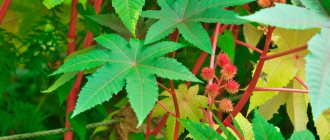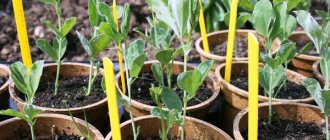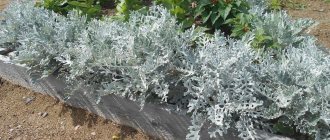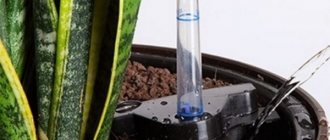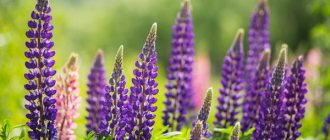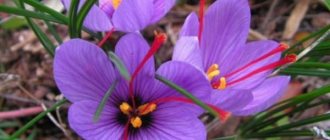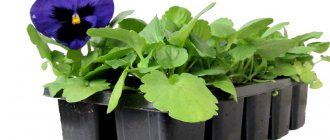About growing cineraria seaside (silver) from seeds, when to plant at home, a must-know for true connoisseurs of ornamental perennials. Planting and care you need to produce according to certain rules, then the plant will delight you with its beauty.
Cineraria seaside or silver is an ornamental foliage plant, which is also called seaside ragwort.
Important! It should not be confused with hybrid cineraria or bloody and graceful, these are different plants.
In the places where it grows it is a perennial, but in Russia it is grown as an annual. The bush grows to a height of about 30 cm and is distinguished by beautiful carved leaves of a silvery hue. Cineraria is used to decorate flower beds, borders, borders, etc.
Most often, cineraria maritima (silver) is grown from seeds. Next, we will tell you in detail how and when to plant cineraria seeds for seedlings at home .
Description
Cineraria belongs to the Astrov family, so it is necessary to sow and care for seedlings according to the same algorithm as other representatives of this group. Cineraria is translated from Latin as “ashy”.
The silvery (Seaside) type of plant is represented by a small herbaceous bush that grows no more than 50 cm in height.
Cineraria maritima is very popular in landscape design due to its velvety carved leaves. The plant is propagated in the fall by cuttings or by sowing seeds in the spring.
Silver cineraria is valued for its beautiful silver-colored leaves. It is often used to decorate borders when landscaping an area. Its flowers are not very beautiful, so they are only needed to produce seeds.
Varieties
Among the available varieties of ragwort, it is worth highlighting the most popular ones.
"Silver will give"
Decorative crop, with a pronounced lacy appearance of leaves. Silver Dust are small bushes with dense pubescence that become more attractive as they grow. The green mass of the variety is carved, the culture will be velvety to the touch, and the color will be silver. The plant is very often used by amateur gardeners and landscape designers.
Most often, the culture can be found in border compositions, in flower beds when grown together with other garden flowers.
Cineraria bloody
A variety of universal type that requires special care, since the shrub goes through a rather long growing season. The decorative appeal of the plant is emphasized by small snow-white inflorescences with a red border. Planting of the crop is usually carried out in winter or early spring.
"Stelata"
A hybrid variety of ragwort. Cineraria bloody was used as the mother culture of this plant. Among the expressive differences of the new bush, it is worth highlighting a different color of the inflorescences - an indigo shade. On average, the shrub is capable of growing in height up to 70 centimeters, while the crop creates an attractive carpet of large leaves on the ground.
This shrub attracts gardeners due to the presence of beautiful inflorescences that look like chamomile. In addition, the decorative appeal is complemented by the color of the flowers, which are distinguished by a burgundy center and deep pink petals.
Timing for planting silver cineraria seedlings
It is best to plant the crop in March and April. However, depending on the region, the sowing time will also vary:
- In the middle zone (Moscow region) – March 15-30.
- In Siberia and the Leningrad region, as well as in the Urals - in early - mid-April.
- In the southern regions - in early March.
You can also refer to the lunar calendar. In 2022, it is recommended to sow cineraria:
- March - 12-17, 19, 20.
- April - 6-8, 11-13, 15-17.
Unfavorable days for planting:
- March - 6, 7, 21.
- April—5, 19.
Features of sowing
Sowing of cineraria is carried out at the end of winter or early spring. To increase the germination of seeds, they are pre-treated with a stimulant (Epin, Energen). Sowing is carried out on the surface. The seeds are evenly distributed over the entire area and lightly pressed to the ground. The soil is carefully sprayed with a sprayer.
The container is covered with a transparent lid or a transparent plastic bag. The seedlings are ventilated daily, briefly removing the cover, and at the same time checking the humidity. The soil should not dry out. If necessary, it is moistened with a spray bottle. In a week, friendly shoots will appear, and the shelter can be removed completely.
Growing from seeds
All gardeners are capable of growing cineraria.
How to properly plant seaside cineraria for seedlings
Sowing silver cineraria seeds for seedlings at home should be carried out using a certain technology in several stages, which consist of preparing the seeds, containers and soil, as well as the sowing itself.
Seed preparation
Seeds of seaside cineraria do not need to be specially prepared for sowing for seedlings.
But it is recommended to keep them for 12 hours in a solution of a growth stimulator (Zircon, Epin-Extra) to improve the germination of the seed.
Priming
It is best to use loose, light, fertile soil for seedlings. You can also take universal soil for seedlings. If it is very dense, you need to add sand, vermiculite or perlite to loosen it.
Advice! The soil must be sifted to remove debris, stones and other large inclusions. To do this, take a sieve with large holes!
You can prepare your own soil mixture:
- 2 parts of turf land;
- 1 part peat;
- 1 part sand.
Important! Before sowing, any soil is disinfected by calcining it in the oven or spilling it with a solution of potassium permanganate.
Capacities
It is best to choose a wide bowl, 8-10 cm high: a seedling box, a food container, etc. You can also take cups or cassettes for seedlings. But it’s most convenient to plant them in a common box and then pick them.
Important! There should be drainage holes in the bottom of the container to drain excess moisture.
Sowing
Step-by-step instructions with photos:
- A 1.5-2 cm drainage layer of expanded clay, perlite or broken brick is placed at the bottom of the container.
- Next, fill the entire container with soil, leaving 2-3 cm from the edges.
- The earth is moistened.
- Sow the seeds on top of the soil using a wooden toothpick, as the seeds germinate in the light. It is moistened in water and brought to the seeds, carefully picking up 1 seed. Touch the end of the toothpick to the surface of the ground so that the seed remains on the ground.
Interesting! Some gardeners bury the seeds, but it is better not to cover them with soil.
- Seeds can be sown by hand, scattering them evenly over the surface at intervals of 2 cm.
- The plantings are watered with warm water from a spray bottle.
- The container is covered with film to create a greenhouse effect.
- The seedlings are signed so as not to be confused with others.
Caring for silver cineraria at home
This flower is not considered whimsical, but there are some peculiarities in caring for it.
Temperature, humidity and lighting
Despite its southern origin, this plant does not like high temperatures. It is the discrepancy between the temperature in the room and the requirements of the plant that explains many failures in breeding silver ragwort. The same can be said about indoor cineraria. For its successful existence, it requires an even cooler room. It is important not only to maintain the temperature range from 15 to 20 degrees, but also to ensure that there are no temperature fluctuations.
Silver ragwort does not tolerate excessive soil moisture, but it likes moist air. At the same time, it is undesirable to spray it, like all pubescent plants. But you can do it differently. Place pebbles at the bottom of a wide tray and add water. Pots with cineraria are placed on top of the pebbles so that their bottoms are on the pebbles but do not touch the water.
Silver groundsel does not tolerate excessive soil moisture, but it likes humid air.
This flower does not like direct sunlight. He is most comfortable on the windowsill of a window oriented east or west. Northeast and northwest orientations are also acceptable. If there is enough light coming into the window, you can even place it on the north window.
How to care for cineraria seedlings
Caring for silver cineraria seedlings at home is not difficult. It is necessary to maintain optimal conditions, then you will be able to grow strong, healthy and strong seedlings:
- The temperature before emergence should be + 20-25 degrees, after - + 18-20 degrees.
- The containers are placed immediately in a bright place, and after germination - on the sunniest windowsill. If necessary, seedlings are illuminated so that they receive 12 hours of daylight per day.
- The film is removed daily for ventilation in the morning and evening for 10 minutes. Wipe off condensation from the film to avoid waterlogging. After seed germination, gradually remove the covering material over 3-4 days.
- The soil should not be allowed to dry out or become waterlogged, otherwise fungal diseases will appear or the roots will rot. It is necessary to provide moderate moisture.
Watch the video! Cineraria seedlings. Features of cultivation
Advice! If the air in the room is dry, it is recommended to use a humidifier or place a container of water near the seedlings.
Picking rules and terms
Seedlings are planted when 2 well-developed leaves appear. To do this, use the same soil as when sowing seeds. It is poured into plastic cassettes, cups, peat pots with a volume of 250 ml or more.
Picking rules:
- The soil with seedlings is moistened.
- Using a spoon, dig up a seedling with soil.
- Planted in a hole in a new container up to the cotyledon leaves.
- Watered.
After picking:
- The room temperature is reduced to 18 degrees during the day and to 16 degrees at night. This is necessary to stimulate growth.
- The seedlings are shaded for the first 2-3 days.
How to feed seedlings
In order for the seedlings to be strong and healthy, they must be fertilized with a complex mineral or organic fertilizer for seedlings. The first time is fertilized 10 days after picking, and again 2 weeks before planting in open ground.
For fertilizer use any complex fertilizer for flower crops that can be diluted in water.
You can also treat seedlings with growth stimulants Epin, Zircon and others.
Organic matter is used several times a season:
- Mullein - 1 kg.
- Water – 10 l.
- Leave for 2-3 days.
- Dilute 10 times with water.
- Water at the root.
When stretching seedlings due to lack of light, they are sprayed or watered with a solution of Atlet to strengthen the stems and form harmonious growth.
Diseases and pests
| Rust Option 1:
Option 2:
| |
| Spider mite Option 1:
Option 2:
|
When to plant open ground
Cineraria seedlings are transplanted into open ground from May 15, when the risk of return frosts has passed and the soil has warmed up well. 14 days before the procedure, the seedlings begin to harden.
Every day the seedlings are taken out onto the balcony or street without drafts and wind, and also protected from sunlight. Gradually, the stay time is increased to a day.
Growing cineraria from seeds at home through seedlings cannot be called a complicated process. Compact silver shrubs, grown independently, will decorate any area.
Watch the video! Cineraria: cultivation and care
Is it an annual or a perennial?
In its natural environment, silver cineraria is a perennial. Most often, the perennial crop can be found in tropical African latitudes. In other climates, the plant is usually cultivated as an annual; in rare cases, biennials can be found in flower beds.
Sagebrush
Just recently, at the mention of this plant, the owners of garden and vegetable plots sternly pursed their lips and angrily raised their eyebrows to the bridge of their nose, because not everyone knows about the non-weed species of wormwood. Some of the varieties of this plant are very decorative and are quite often used in landscape design.
1 – Wormwood Pursha; 2 – Steller’s wormwood; 3 – Louis wormwood; 4 – Schmidt’s wormwood
Wormwood Pursha. An actively growing species with long pointed leaves. The height of Pursha wormwood can reach 60 cm, but if you wish, you can always remove the extra centimeters, because This plant tolerates pruning very well.
Steller's Wormwood. Its decorative effect is expressed not only by its silver color, but also by the openwork shape of the leaves. Relatively low (20-30 cm) outstretched shoots quickly grow and lie down over time. Unlike most types of wormwood, it does not have a rich aroma. An excellent option for those who do not like wormwood because of its specific smell.
Wormwood Louis. This species can be called tall, because. under favorable conditions, its compact bushes can grow up to 60-80 cm. This allows you to use Louis wormwood to decorate the background. It lends itself well to shaping, but has a pronounced wormwood aroma and therefore is not suitable for everyone.
Schmidt's wormwood. A compact plant 20-30 cm high forms dense spherical bushes. The leaves of Artemisia Schmidt consist of many thread-like lobes, which makes them even more graceful.
Reproduction options
Cineraria "Silver Dust" can be successfully propagated in the following ways.
Cuttings. This is the simplest option, in which at the end of summer a shoot 10 cm long is cut off, and the cut site is treated with “Kornevin”. The soil prepared in advance in a box should consist of 10-12 cm of fertile soil and 5-7 cm of coarse sand. The ground should be moistened with a weak solution of potassium permanganate, the cutting should be inserted into the soil and covered with a transparent plastic bottle. You need to water the bottle from above; it is removed when the cutting takes root. The wooden box with the cutting must be placed in a cool place until spring.
Torenia breeding rules
To propagate this tropical plant, both generative (using seeds) and vegetative methods are used. If we talk about the latter, then rooting of cuttings is practiced.
Propagation of torenia using seeds.
To do this, it is recommended to grow seedlings. At the end of the winter period (in the last week of February), it is necessary to sow the collected or purchased seeds into seedling boxes. Fill the containers with a loose and nutritious soil mixture, which can be used as a peat-sand composition, a mixture of equal amounts of river sand and loam, or you can purchase soil for seedlings or “Geranium” soil in a store.
Advice!
Before sowing, any substrate should be disinfected - calcined in the oven at a temperature of 150 degrees or more and then poured with a solution of manganese permanganate (pharmaceutical potassium permanganate), diluted to a pink tint.
In the seedling box for torenia seeds, grooves are formed, from which the seed is placed. Sprinkle a thin layer of sand on top and moisten with a fine spray bottle. To create favorable conditions for seed germination, it is recommended to wrap the seedling boxes with a thick film of transparent polyethylene or place a piece of glass on top. The place for germination, in which the container with torenia crops is placed, should be warm. The temperature in it is maintained at around 21 degrees. Caring for crops involves keeping the soil moderately moist and ventilating. Watering is carried out using a spray bottle and warm water.
When the first torenia shoots appear above the soil surface (this will be after a couple of weeks), the shelter can be removed, and the seedling boxes are placed in a well-lit place, but not in direct sunlight. Care will also include watering with warm, settled water.
Important! To prevent torenia seedlings from becoming too elongated and thin, the temperature in the room is lowered to a range of 16–18 degrees.
The same applies to the length of daylight hours. With a lack of lighting, torenia sprouts can become thinner and weaken, so it is recommended to provide additional lighting on cloudy days using special phytolamps.
When a pair of true leaves develop on the seedlings, the seedlings are picked into separate containers. To do this, it is necessary to use cups made from pressed peat for ease of subsequent replanting. If there are none, then reusable plastic containers or pots will do. The soil used is the same as when germinating torenia seeds. Several seedlings can be planted in each container, and then the same group will be transplanted into open ground.
After 10 days have passed from the moment of planting of torenia seedlings, it is necessary to perform the first fertilizing, using complex mineral fertilizers produced in liquid form. For example, such agents may be Plantofol or Fertika. The dosage specified by the manufacturer is used.
As soon as torenia seedlings acquire three pairs of leaves, it is recommended to pinch the tips of the shoots to stimulate branching. Transplantation into open ground is possible no earlier than the beginning of summer, when the threat of return frosts is completely eliminated.
Propagation of torenia using cuttings.
It is clear that it is possible to apply this method only when bushes of this tropical flower are already growing on the site. For preparations, the upper branches of the plant are used, and the cutting length should be 6–8 cm. Before planting, the sections can be dipped in a root formation stimulator (for example, Kornevin) or water with aloe juice or honey dissolved in it.
Torenia cuttings are planted in pots filled with a soil mixture of river sand, peat chips and loam. When it becomes clear that the branches have taken root (by the unfolding leaves), you can transplant to a prepared place in the garden.
